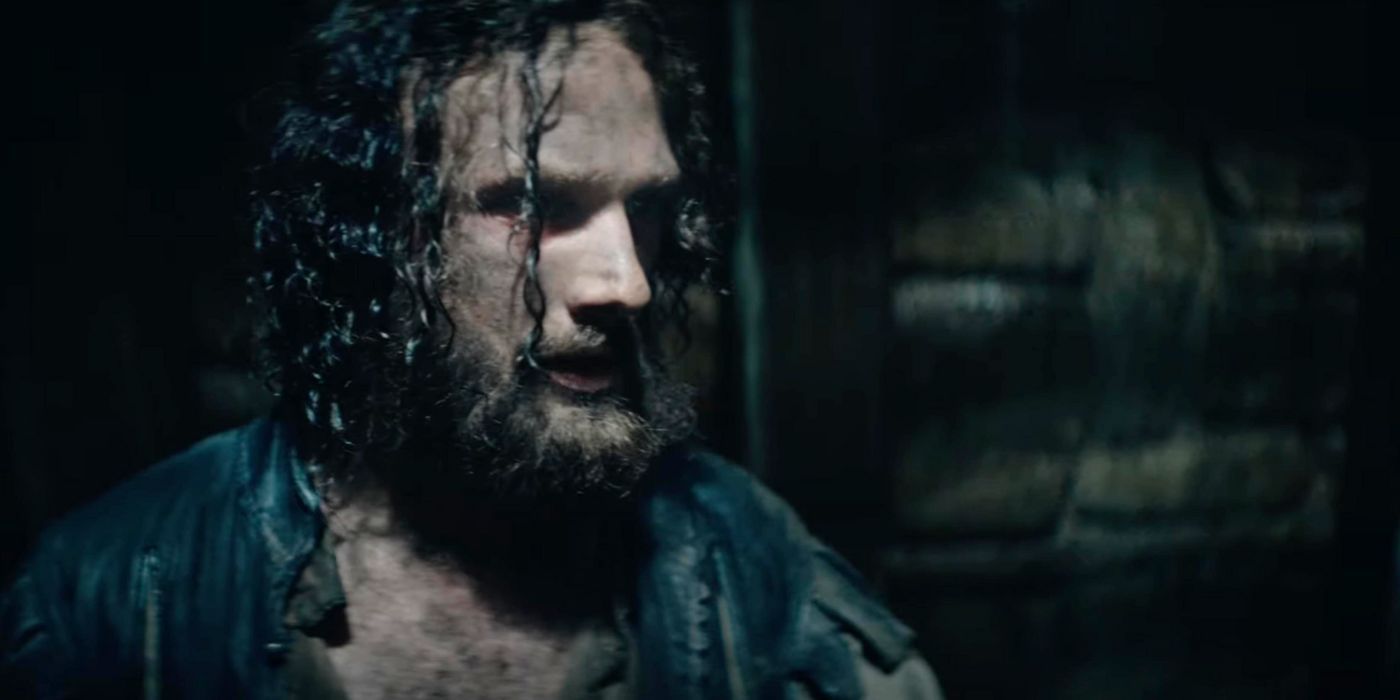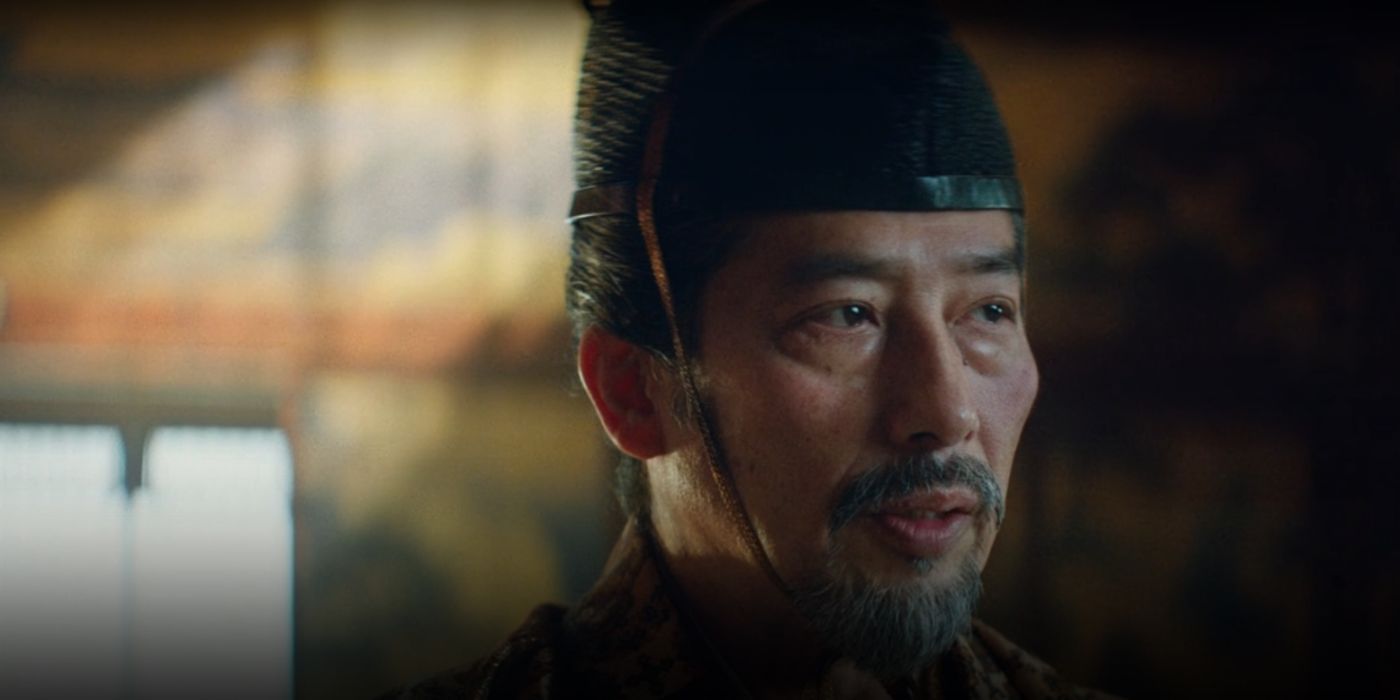
The Misunderstood Encounter: John Blackthorne's Perception of Shogun's Osaka Doctor

John's initial confusion leads to labeling the doctor as a 'warlock' in a tale of misunderstood intentions.
In FX's historical epic Shōgun, the clash between multiple cultures in 17th-century Feudal Japan is showcased, as seen in episode 3 with John Blackthorne's encounter with a Japanese doctor. The show's popularity, indicated by record-breaking streaming numbers, is largely due to its immersive portrayal of 1600s Japan. The interaction between the missionary Portuguese, the sophisticated Japanese culture, and John Blackthorne's Protestant English perspective creates moments of unintentional comedy.
Cosmo Jarvis' portrayal of John Blackthorne as a fish out of water effectively introduces the audience to the intricate Japanese culture in Shōgun. The Englishman has much to offer his host Lord Toranaga, who elevates John Blackthorne to the honorable position of hatamoto. Despite this promotion, John still has a lot to learn about the advanced society in which he now finds himself.
John's "Warlock" Comment In Shōgun Episode 3 Is Another Example Of Cultural Differences
John is not used to the societal progress seen in Japanese culture.
Cosmo Jarvis as a dirty and captive John Blackthorne in FX's Shogun - John is not used to the societal progress seen in Japanese culture. - John's "Warlock" Comment In Shōgun Episode 3 Is Another Example Of Cultural Differences
After surviving the attack by the Amida assassin, John refers to the Japanese doctor caring for him as a "warlock", a term similar to wizard or sorcerer. He fears the doctor might bleed him, a common medical procedure in England during that era. John struggles to comprehend the doctor's unfamiliar healing methods, which seem basic to the Japanese.
Despite the Cultural Differences, Lord Toranaga's Group Is Learning From John Blackthorne
While it's partially due to a difference in cultures, John's unfamiliarity with some elements of Japanese culture also stems from a difference in class. He previously was hesitant to bathe due to his fear of the flux, which is another word for dysentery. Dysentery is typically a result of drinking or bathing in dirty water, which to John was likely commonplace. Due to lack of medical advancement, dysentery was a true killer in John Blackthorne's England, whereas in Japan--especially in the house of someone of Lord Toranaga's status--it simply wasn't as big a concern.
There are elements of John's culture that Lord Toranaga knows will benefit him to learn.
Closeup of Hiroyuki Sanada as Toranaga in Shogun - There are elements of John's culture that Lord Toranaga knows will benefit him to learn. - Despite The Cultural Differences, Lord Toranaga's Group Is Learning From John Blackthorne
John is not only learning about Japanese culture but also sharing his knowledge with Toranaga's group. Toranaga's decision to grant John the title of hatamoto shows that he values John's skills, especially in maritime combat, as his group prepares for a potential war. This is why Toranaga has asked John to teach his fighters.
John Blackthorne's character is inspired by William Adams, a historical figure who was the first Englishman to arrive in Japan in 1600.
Toranaga realizes he can learn a great deal from John, especially on a personal level, as shown by his interest in learning how to dive. As they navigate through the daimyo's intensifying conflict, their bond is expected to strengthen. One of the captivating aspects of Shōgun is the cultural collision in feudal Japan, with the dynamic between John Blackthorne and Lord Yoshi Toranaga serving as a prime example of this intriguing contrast.
Editor's P/S:
FX's "Shōgun" offers a captivating immersion into the cultural tapestry of 17th-century Japan. The clash between the missionary Portuguese, the sophisticated Japanese culture, and the Protestant English perspective of John Blackthorne creates a rich and nuanced narrative. The show's popularity is a testament to its authentic portrayal of feudal Japan, with its intricate customs, advanced societal progress, and internal conflicts.
At the heart of this cultural collision is the fascinating dynamic between John Blackthorne and Lord Yoshi Toranaga. John's initial unfamiliarity with Japanese culture highlights the societal differences between England and Japan, while Toranaga's willingness to learn from John demonstrates the mutual respect and potential for growth that can emerge from cultural exchange. The bond between these two characters promises to be a compelling thread throughout the series, as they navigate the complexities of feudal Japan and the intensifying conflict between the daimyos.















